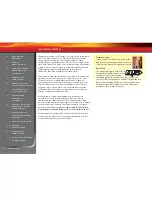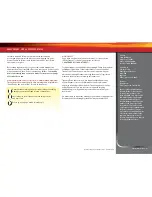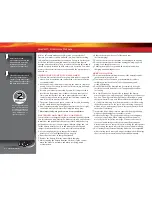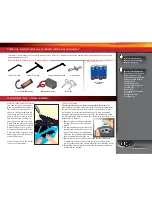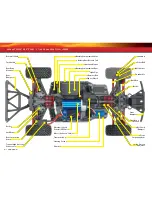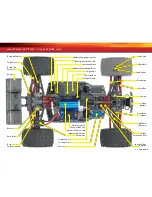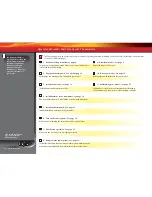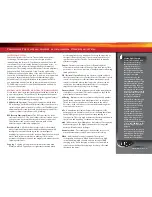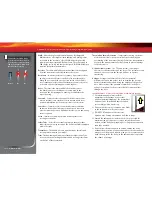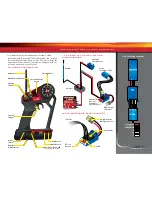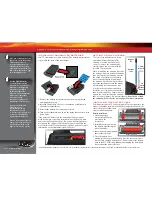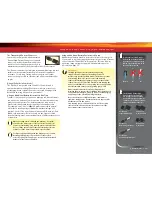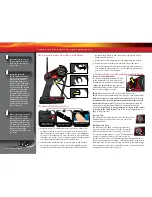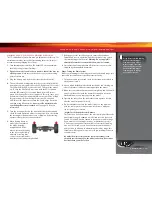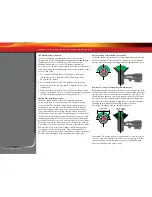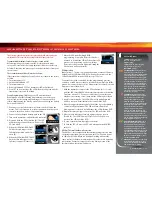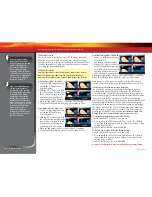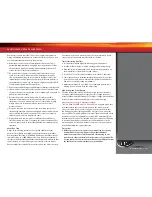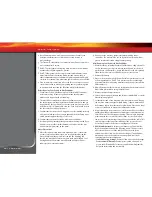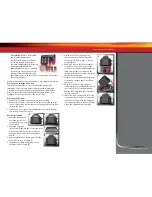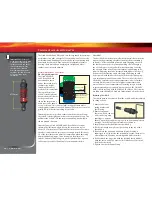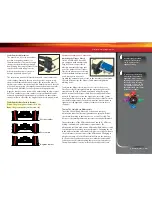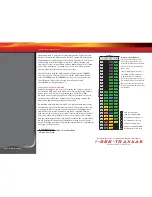
TR A X X AS
•
9
TRAXXAS TQ 2.4GHz RADIO & VELINEON POWER SYSTEM
INTRODUCTION
Your model includes the latest in Traxxas 2.4GHz transmitter
technology. The transmitter’s easy-to-use design provides
instant driving fun for new R/C enthusiasts, and also offers a full
compliment of pro-level tuning features for advanced users – or
anyone interested in experimenting with the performance of
their model. The steering and throttle channels feature adjustable
Exponential, End Points, and Sub-Trims. Steering and braking
Dual Rate are also available. Many of the next-level features are
controlled by the Multi-Function knob, which can be programmed
to control a variety functions. The detailed instructions (page
28) and Menu Tree (page 30) included in this manual will help
you understand and operate the advanced functions of the new
TQ 2.4GHz radio system. For additional information and how-to
videos, visit Traxxas.com.
RADIO AND POWER SYSTEM TERMINOLOGY
Please take a moment to familiarize yourself with these radio and
power system terms. They will be used throughout this manual.
A detailed explanation of the advanced terminology and features
of your new radio system begins on page 28.
2.4GHz Spread Spectrum
– This model is equipped with the latest
R/C technology. Unlike AM and FM systems that require frequency
crystals and are prone to frequency conflicts, the TQ2.4GHz system
automatically selects and locks onto an open frequency, and offers
superior resistance to interference and “glitching.”
BEC (Battery Eliminator Circuit)
- The BEC can either be in the
receiver or in the ESC. This circuit allows the receiver and servos
to be powered by the main battery pack in an electric model.
This eliminates the need to carry a separate pack of 4 AA
batteries to power the radio equipment.
Brushless Motor
- A D/C brushless motor replaces the brushed
motor’s traditional commutator and brush arrangement with
intelligent electronics that energize the electromagnetic
windings in sequence to provide rotation. Opposite of a brushed
motor, the brushless motor has its windings (coils) on the
perimeter of the motor can and the magnets are mounted to the
spinning rotor shaft.
Cogging
- Cogging is a condition sometimes associated with
brushless motors. Typically it is a slight stutter noticed when
accelerating from a stop. It happens for a very short period as
the signals from the electronic speed control and the motor
synch with each other. The VXL-3m is optimized to virtually
eliminate cogging.
Current
- Current is a measure of power flow through the
electronics, usually measured in amps. If you look at wire like a
garden hose, current is a measure of how much water is flowing
through the hose.
ESC (Electronic Speed Control)
- An electronic speed control is
the electronic motor control inside the model. Electronic speed
controls use power more efficiently than mechanical speed
controls so that the battery runs longer. An electronic speed
control also has circuitry that prevents loss of steering and
throttle control as the battery loses its charge.
Frequency band
- The radio frequency used by the transmitter to
send signals to your model. This model operates on the 2.4GHz
direct-sequence spread spectrum.
kV Rating
- Brushless motors are often rated by their kV number.
The kV rating equals no-load motor rpm with 1 volt applied.
The kV increases as the number of wire turns in the motor
decreases. As the kV increases, the current draw through the
electronics also increases.
LiPo
- Abbreviation for Lithium Polymer. Rechargeable LiPo
battery packs are known for their special chemistry that allows
extremely high energy density and current handling in a
compact size. These are high performance batteries that require
special care and handling. For advanced users only.
mAh
– Abbreviation for milliamp hour. A measure of the capacity
of the battery pack. The higher the number, the longer the
battery will last between recharges.
Neutral position
- The standing position that the servos seek
when the transmitter controls are at the neutral setting.
NiCad
- Abbreviation for nickel-cadmium. The original
rechargeable hobby pack, NiCad batteries have very high
current handling, high capacity, and can last up to 1000
charging cycles. Good charging procedures are required to
reduce the possibility of developing a “memory” effect and
shortened run times.
2
Use the Right Charger
Your model includes a ‘wall
charger’ that will charge
the supplied battery in
approximately six hours.
Unplug the battery from
the charger, and unplug the
charger from the wall, when
charging is complete.
For faster charging, the
Traxxas TRX Power Charger
(item #3030X) may be used in
combination with a Traxxas
High Current Plug adapter
(item #3062). This will reduce
charging time to about one
hour. The Power Charger will
detect when the battery pack
is fully charged, and stop
charging automatically.
Certain aftermarket chargers
may also be used to charge
the included battery, but
use caution when selecting
a charger. ‘Timer’ or
mechanical chargers with
a clockwork timer are not
recommended as they may
overcharge the battery. We
suggest you ask your local
hobby dealer to help you
select an appropriate charger,
or call 1-888-TRAXXAS so our
customer support team can
help you.
No matter which charger you
choose, never leave a battery
unattended while charging.
Always follow the charger
manufacturer’s instructions.


